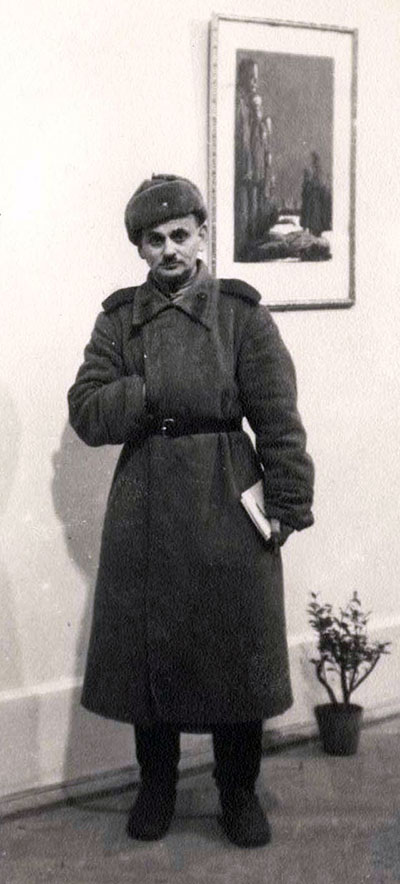Biography of Zinovii Tolkatchev
1903
Born in the town of Shchedrin in Belarus (USSR). His father was a metal worker.
1909-1919
Tolkatchev studied at a vocational school as well as at a school for the arts. Due to his family’s poor financial situation, he was forced to leave school and work as an apprentice to a sign painter. Afterwards he joined an artists’ cooperative.
1919-1920
Tolkatchev became one of the first members of the Komsomol (the Young Communist League). As a member of the revolutionary underground, he participated in the Civil War. Tolkatchev went to Moscow to study with the artists Osmarkin and Kontsalovsky.
1920
Tolkatchev returned to Kiev and became responsible for the political education department of the Komsomol in the regions of Podolsk and Shulov. During this period he painted several murals in the youth clubs of this region.
1922
Tolkatchev joined the Communist Party.
1924
Tolkatchev was sent to study at the Communist Institute in Kharkov.
1925-1927
Tolkatchev served in the Red Army in an artillery division.
1928-1930
Taught at the Institute of Fine Arts in Kiev.
1929
Tolkatchev’s exhibit about the death of Lenin, “The Great Sorrow”, was exhibited in Kiev and Moscow.
1930’s
Tolkachev worked on book illustration, including the works of Gorki and Sholem Aleichem. He exhibited the series “The Shtetl” in 1939.
1940
Tolkatchev was appointed professor at the Institute of Fine Arts in Kiev.
1941-1945
Tolkatchev enlisted in the Red Army, despite his age. He continued to create official art for the Soviet regime.
1944-1945
As an official artist of the Red Army he joined up with Soviet forces in Majdanek, shortly after its liberation (1944) and immediately after that with the forces that liberated Auschwitz (1945). During this period he drew the series: “Majdanek”, “Auschwitz” and “the Flowers of Auschwitz.”
1945-1946
The series “Majdanek” and “the Flowers of Auschwitz” were published as albums. They were also exhibited in various locales in Poland in the cities of Lublin, Rzeszow, Krakow, Katowice, Lodz and Warsaw. The Polish Government sent these albums to heads of state of the Allies, government ministers and military officers.
1950-1960
The relation of the authoritesauthorities toward Tolkatchev changed. Tolkatchev’s works were declared defective – he was denounced as “the personification of detachedof detached cosmopolitanism and bourgeois nationalism” because” because of his “Zionist-religious works.”
1960-1970
Tolkatchev worked on book illustration and on the portraits of Ukrainian writers. He also returned to the theme of the death camps. The album “Auschwitz” was published in Kiev in 1965.
1977
Tolkatchev passed away in Kiev.
